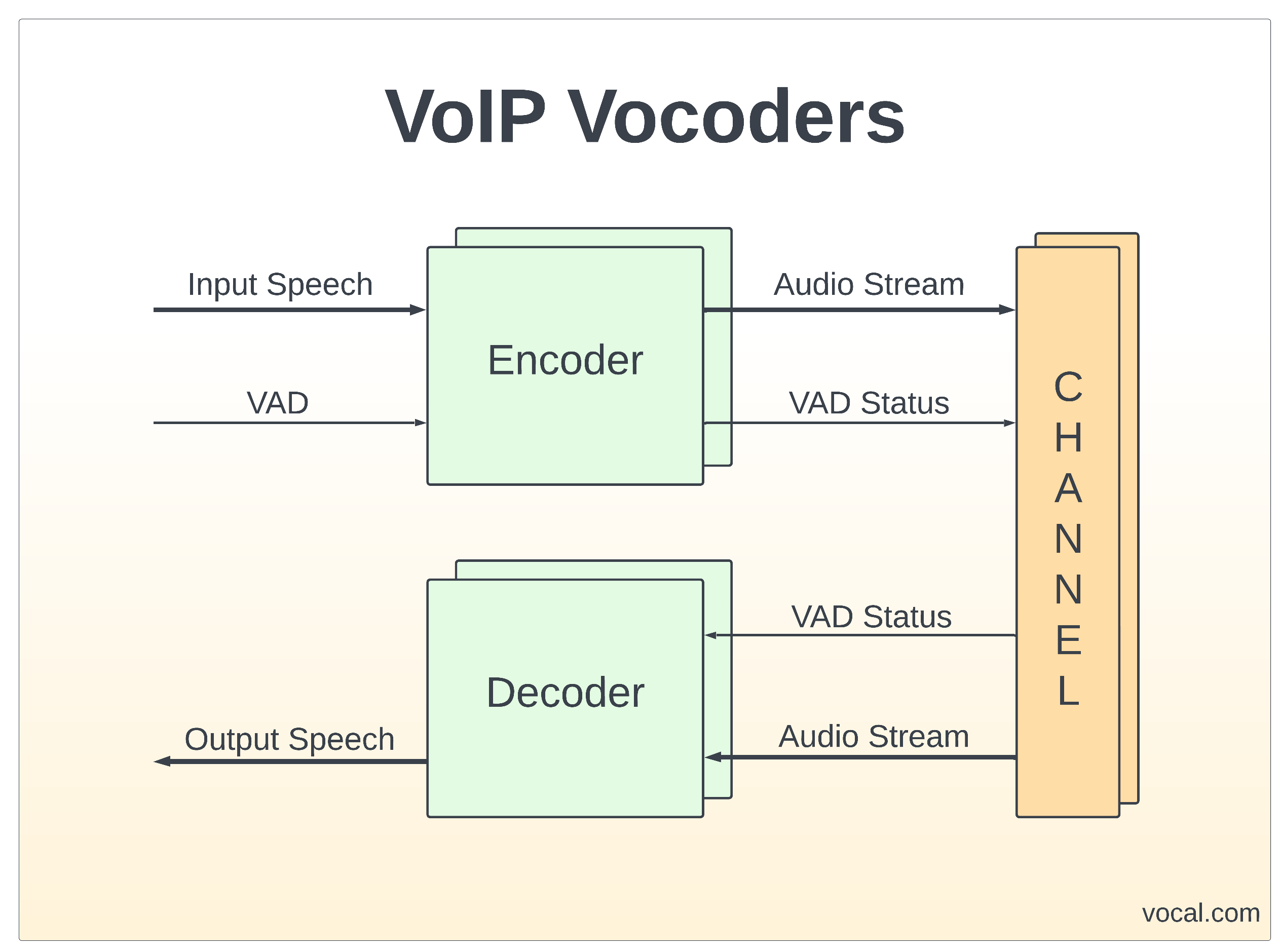
VoIP Vocoders used in modern voice communication systems are no longer bound by traditional PSTN limitations as many of today’s voice over IP (VoIP) applications obtain greater clarity through the use of wideband voice codecs. When selecting a particular voice codec for voice and audio compression in VoIP applications there are several things to evaluate. Each VoIP vocoder has a set of unique characteristics which may affect their suitability for a particular function and/or platform. Contact us to discuss your VoIP application requirements.
Wideband VoIP
Wideband VoIP operates at higher sample rates such as 16 and 32 KHz. This offers the opportunity for greater clarity and improved latency (using the proper voice codecs and packet handling). Combined with a wideband capable speakerphone or other communications device, the user is offered a vivid shift in expectations, perhaps comparable to the switch from standard TV to high definition TV (HDTV). This high definition voice processing, when incorporated into a VoIP system, drives user expectations in many HD VoIP systems.
VoIP Vocoder Modules
The following C and optimized assembly embedded VoIP vocoder modules are available:
Narrowband
- iLBC
- MELP
- MELPe
- EVS
- G.711
- G.723.1
- G.726
- G.728
- G.729/G.729A
- G.729 Annex B
- GSM speech codecs
- GSM 06.10 Full Rate
- GSM 06.20 Half Rate
- GSM 06.60 Enhanced Full Rate
- GSM 06.90 Adaptive Multi Rate
Wideband
Applications
- WIFI phones VoWLAN
- Wireless GPRS EDGE systems
- Personal communications
- Wideband IP telephony
- Audio-video entry monitors and doorbells
- HD baby monitors
- Audio and video conferencing
Features
- Full and half duplex modes of operation
- Wideband audio for greater clarity
- RTP framing available for all VoIP and HD VoIP configurations
- Pass ITU test vectors
- Compliant with ITU specifications
- Optimized for high performance on leading edge DSP architectures
- Multichannel implementation
- Multi-tasking environment compatible
- Variable speed playback
Configurations
- DAA interface using linear codec at 8.0 kHz sample rate
- Direct interface to 8.0 kHz PCM data stream (A-law or μ-law)
- North American/International Telephony (including caller ID) support available
- Simultaneous DTMF detector operation available – (less than 150 hits on Bellcore test tape typical)
- MF tone detectors, general purpose programmable tone detectors/generators available
- Data/Facsimile/Voice Distinction available
- Common compressed speech frame stream interface to support systems with multiple speech coders
- Dynamic speech coders selection if multiple speech codecs available
- Can be integrated with G.168 Echo Canceller and Tone Detection/Regeneration modules
- Complete facsimile systems available – modulations (V.34fax, V.17, et al.) and protocols (T.30) as a facsimile terminal or facsimile relay configuration
- Complete data modem systems available – modulations (V.90, V.34, et al.) and protocols (V.42, PPP framing, et al.)
- Various startup procedures available (V.8 and V.8bis)
- Multiple ports can be executed on a single DSP
VoIP Vocoder Software
VOCAL’s embedded libraries include a complete range of ETSI / ITU / IEEE compliant algorithms, in addition to many other standard and proprietary algorithms. Our VoIP vocoder source code is optimized for execution on ANSI C and leading DSP architectures from TI, ADI, AMD, Intel, ARM, MIPS, and other vendors. The software libraries are modular and can be executed as a single task under a variety of operating systems or standalone with its own microkernel.

VOCAL’s solution is available for the above platforms. Please contact us for specific supported platforms.